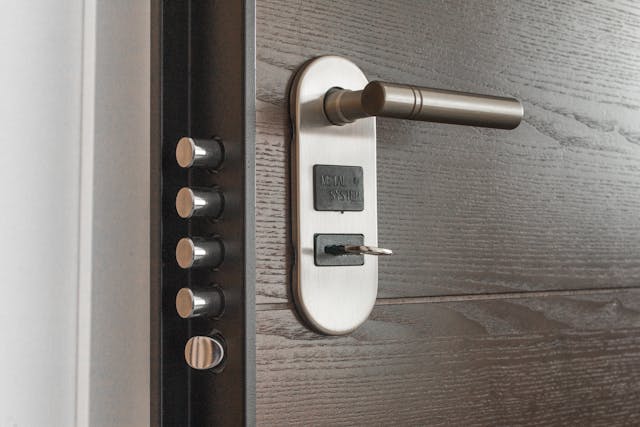Enhancing Security with Modern Commercial Door Entry Systems: A Comprehensive Guide
In today's rapidly evolving business environment, security is paramount. One of the most effective ways to ensure the safety and security of a commercial property is through the use of modern door entry systems. These systems not only enhance security but also offer convenience and control over access to your premises. This comprehensive guide will delve into the various aspects of commercial door entry systems, their benefits, and how they can be implemented to maximize security and efficiency.
Understanding Commercial Door Entry Systems
Commercial door entry systems are designed to manage and control access to buildings and secure areas within buildings. These systems can range from simple keypad entry systems to more advanced biometric and smart card access control systems. The primary goal of these systems is to restrict access to authorized personnel and monitor who enters and exits the premises.
Types of Commercial Door Entry Systems
- Keypad Entry Systems
- Require a code to be entered to gain access.
- Cost-effective and easy to install.
- Can be easily reprogrammed if codes are compromised.
- Card-Based Entry Systems
- Use swipe or proximity cards for access.
- Cards can be programmed for different access levels.
- Provides a record of entries and exits.
- Biometric Entry Systems
- Use fingerprints, facial recognition, or retinal scans.
- Highly secure as biometrics are unique to each individual.
- Reduces the risk of unauthorized access due to lost or stolen cards.
- Smartphone-Based Entry Systems
- Utilize mobile apps to grant access.
- Convenient and easy to manage.
- Can integrate with other security systems and provide remote access control.
- Intercom Systems
- Allow communication with visitors before granting access.
- Can be audio or video-based.
- Enhances security by allowing visual or verbal confirmation of identity.
Benefits of Modern Commercial Door Entry Systems
Implementing a modern door entry system offers numerous advantages, including:
- Enhanced Security: These systems provide a higher level of security by restricting access to authorized personnel only.
- Access Control: Different access levels can be assigned to different employees, ensuring sensitive areas are protected.
- Convenience: Automated systems reduce the need for physical keys and simplify the process of granting or revoking access.
- Monitoring and Reporting: Many systems offer detailed logs of entry and exit times, which can be useful for security audits and investigations.
- Cost-Effective: While initial installation costs can be high, these systems reduce the need for security personnel and lower the risk of theft or vandalism.
Implementing a Commercial Door Entry System
Assessing Your Needs
Before selecting a door entry system, it is crucial to assess your specific security needs. Consider the following factors:
- The size and layout of your building.
- The number of employees and visitors.
- Areas that require restricted access.
- Budget constraints.
- Future scalability and integration with other security systems.
Choosing the Right System
Based on your assessment, choose a system that best fits your requirements. It is advisable to consult with a security expert or a reputable provider to ensure you select the most appropriate solution.
Installation and Integration
Professional installation is recommended to ensure the system is set up correctly and functions seamlessly. Integrating the door entry system with existing security measures, such as CCTV and alarm systems, can provide a comprehensive security solution.
Training and Maintenance
- Training: Ensure that all employees are trained on how to use the new system effectively.
- Maintenance: Regular maintenance and updates are crucial to keep the system running smoothly and securely. This includes software updates, hardware checks, and reprogramming access codes or cards as needed.
Addressing Potential Challenges
While modern door entry systems offer numerous benefits, they can also present certain challenges:
- Technical Issues: Malfunctions or technical issues can disrupt access. Ensure there is a support system in place for prompt resolution.
- Privacy Concerns: Biometric systems, in particular, may raise privacy concerns among employees. It is important to address these concerns transparently and ensure data protection measures are in place.
- Cost: The initial investment can be significant. However, the long-term benefits often outweigh the costs.
Best Practices for Maximizing Security
To make the most of your commercial door entry system, consider the following best practices:
- Regular Audits: Conduct regular security audits to identify and address potential vulnerabilities.
- Update Access Rights: Regularly update and review access rights to ensure they reflect current employee roles and responsibilities.
- Monitor Logs: Regularly monitor access logs for any unusual activity.
- Emergency Protocols: Establish and communicate clear emergency protocols for situations such as lost cards or technical failures.
- Employee Training: Provide ongoing training to employees on security best practices and system use.
Conclusion
Investing in a modern commercial door entry system is a crucial step toward enhancing the security of your business premises. By understanding the different types of systems available, their benefits, and how to implement them effectively, you can significantly improve your security measures. Remember to regularly review and update your system to keep up with evolving security threats and ensure the safety and protection of your property and personnel.

